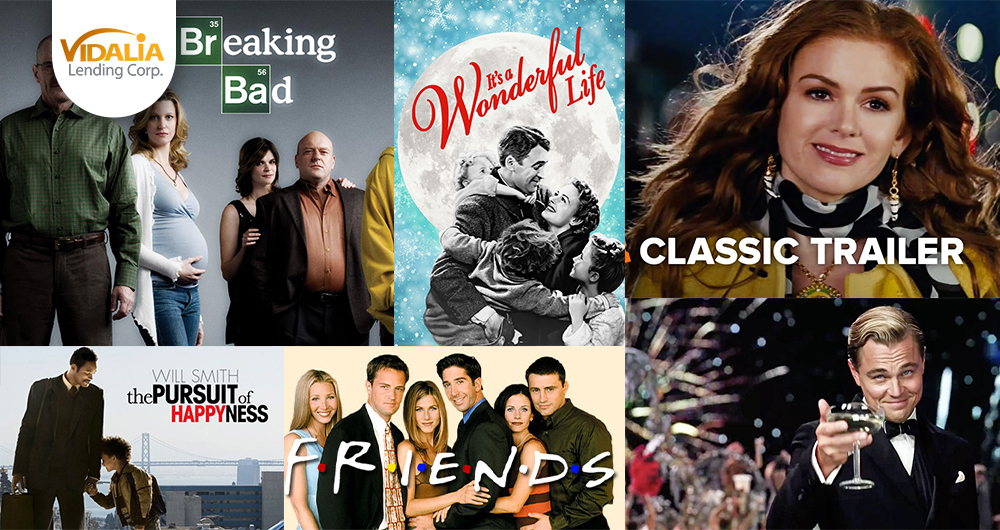You’ve seen them time and time again: iconic films and television series that not only entertain but also teach important lessons about borrowing, loans, and financial responsibility.
Prepare to be immersed in the worlds of beloved characters as they deal with the ups and downs of managing their finances. In this insightful exploration, you’ll find six essential loan lessons that go beyond the screen, delivering practical advice to help you make your own financial decisions.
Importance of Loan Lessons in Movies and TV Shows
You may not realize it, but the movies and television series you enjoy frequently teach essential lessons about borrowing, debt, and financial responsibility that can influence your real-life financial decisions.
Research conducted at the University of Arizona discovered that viewing financial reality TV programs, like Shark Tank or The Profit, can boost individuals’ confidence in their ability to manage money effectively and motivate them to save more.
Likewise, Scholars from the University of Wisconsin-Madison uncovered that watching popular sitcoms, such as Friends or The Big Bang Theory, can enhance people’s financial literacy and foster positive attitudes toward personal finance, particularly among young adults.
By immersing yourself in the lives of favorite characters as they deal with financial issues, you develop a better grasp of the potential pitfalls and triumphs that can result from borrowing decisions.
Furthermore, by learning from the show’s protagonist’s failures and accomplishments, you can build a more informed and responsible approach to managing your own money, allowing you to make sound decisions and avoid the financial problems represented on the show.
6 Loan Lessons from Movies and TV Shows
Here, you can explore the concept of borrowing as portrayed in films and television shows to develop a greater understanding of financial responsibilities, consequences, and wisdom. The following six examples demonstrate various features of borrowing.

1. It’s a Wonderful Life (1946)
Loan Lesson: Embrace responsible borrowing and community support.
In this classic film, George Bailey goes into personal debt to help others and keep his family’s business going. When confronted with financial catastrophe, the community rallies around him, emphasizing the value of responsible borrowing and the strength of community solidarity.
You can find yourself in the shoes of George, as you navigate through life’s challenges, you make decisions that balance your financial needs with the well-being of others, understanding that every loan carries a responsibility to repay it. You can also discover the power of community, as your friends and neighbors rally around you in times of need, reminding you that you are not alone.
2. Friends (1994-2004)
Loan Lesson: Balance friendship and borrowing.
Throughout the series, the main characters frequently borrow money from one another, emphasizing the complications of combining friendship with financial transactions.
You can see the characters negotiating the difficult line between friendship and financial transactions. Whether Rachel borrows money from Monica to pay for her portion of the apartment or Joey asks Chandler for a loan to cover his rent, the program shows how lending and borrowing can put a strain on even the strongest of friendships.
The show emphasizes the value of open communication, trust, and accountability when borrowing or lending among friends.
3. The Pursuit of Happyness (2006)
Loan Lesson: Overcome debts and be persistent.
Chris Gardner, the protagonist, experiences great financial difficulties as he tries to make ends meet and maintain his son while pursuing a profession as a stock broker. His path demonstrates the value of endurance, hard work, and commitment to conquering debt and reaching financial stability.
You may follow Chris’ incredible journey as he overcomes financial difficulties. Despite increasing debts and the weight of unpaid bills, you will learn the value of tenacity in the face of hardship. Watching him work odd jobs, spend restless nights in shelters, and tirelessly chase an internship that could transform his life’s path reminds you that overcoming debt and reaching success frequently demands unwavering persistence and a willingness to sacrifice.
4. Breaking Bad (2008-2013)
Loan Lesson: Understand the desperation and consequences of high-risk borrowing.
Walter White’s spiral into criminal activity begins when he decides to create methamphetamine to protect his family’s financial future after being diagnosed with terminal cancer. His actions highlight the dire implications of going to high-risk borrowing out of desperation.
With growing medical bills and an uncertain future, you can understand Walter’s reasons as he obtains start-up money from deceitful creditors, and dealing with the violent consequences of defaulting on payments teaches you the dangers of taking out loans from untrustworthy sources.
You will also see how desperation can cloud judgment and the enormous toll that high-risk loans can exact, not only financially, but psychologically and ethically as well.
5. Confessions of a Shopaholic (2009)
Loan Lesson: Consider the consequences of impulsive borrowing and overspending.
The film follows Rebecca Bloomwood, a compulsive shopper who is drowning in debt due to her impulsive shopping habits. Her experiences teach viewers about the negative consequences of excessive borrowing, the value of financial literacy, and the path to financial responsibility.
The film shows the excitement of acquiring fashionable clothing, accessories, and household items using credit cards and installment plans. However, as Rebecca’s debts grow out of hand, we are confronted with the severe financial and personal consequences of reckless spending. The film teaches a relatable lesson on the need for budgeting, financial planning, and fighting the temptation to live beyond your means due to easy access to credit.
6. The Great Gatsby (2013)
Loan Lesson: Beware of the Illusion of Wealth and Excessive Borrowing.
Jay Gatsby’s extravagant lifestyle and parties are motivated by excessive borrowing and a desire to impress Daisy Buchanan. The story serves as a cautionary tale about the risks of pursuing material wealth with borrowed money, as well as the emptiness of such goals.
Surrounded by the luxurious parties and material excesses supported by Jay Gatsby’s unexplained wealth, you quickly realize the grim truth lurking beyond the glittering surface. The Great Gatsby cautions against the attraction of quick money and the false sense of achievement it can produce. You discover that Gatsby’s desperate attempts to reclaim his lost love, Daisy, were motivated by irresponsible debt buildup.
The film serves as a caution to avoid borrowing above your means, as the consequences can derail even the most carefully manufactured illusion of wealth.
Each of these films and television shows provides a unique viewpoint on borrowing, highlighting its possible risks, consequences, and the value of smart financial management. Understanding these stories can provide viewers with significant insights into making informed borrowing and managing financial decisions.
Star in Your Own Financial Success Story with Vidalia Lending Corp.
Imagine you’re at a crossroads in your financial life, unsure which course to choose. Vidalia Lending Corp understands your need for a dependable partner and provides a variety of loan products that fit your specific situation. Whether you want to consolidate debt, finance a significant purchase, or invest for the future, our team will help you every step of the way.
Just like the lessons learned from movies and television shows, we advise you to always read and, understand the terms of your loan, and ensure that you can comfortably handle the repayments.
With Vidalia Lending Corp, you can be confident that you’re making an informed selection that corresponds with your financial goals and needs. Apply Now!





